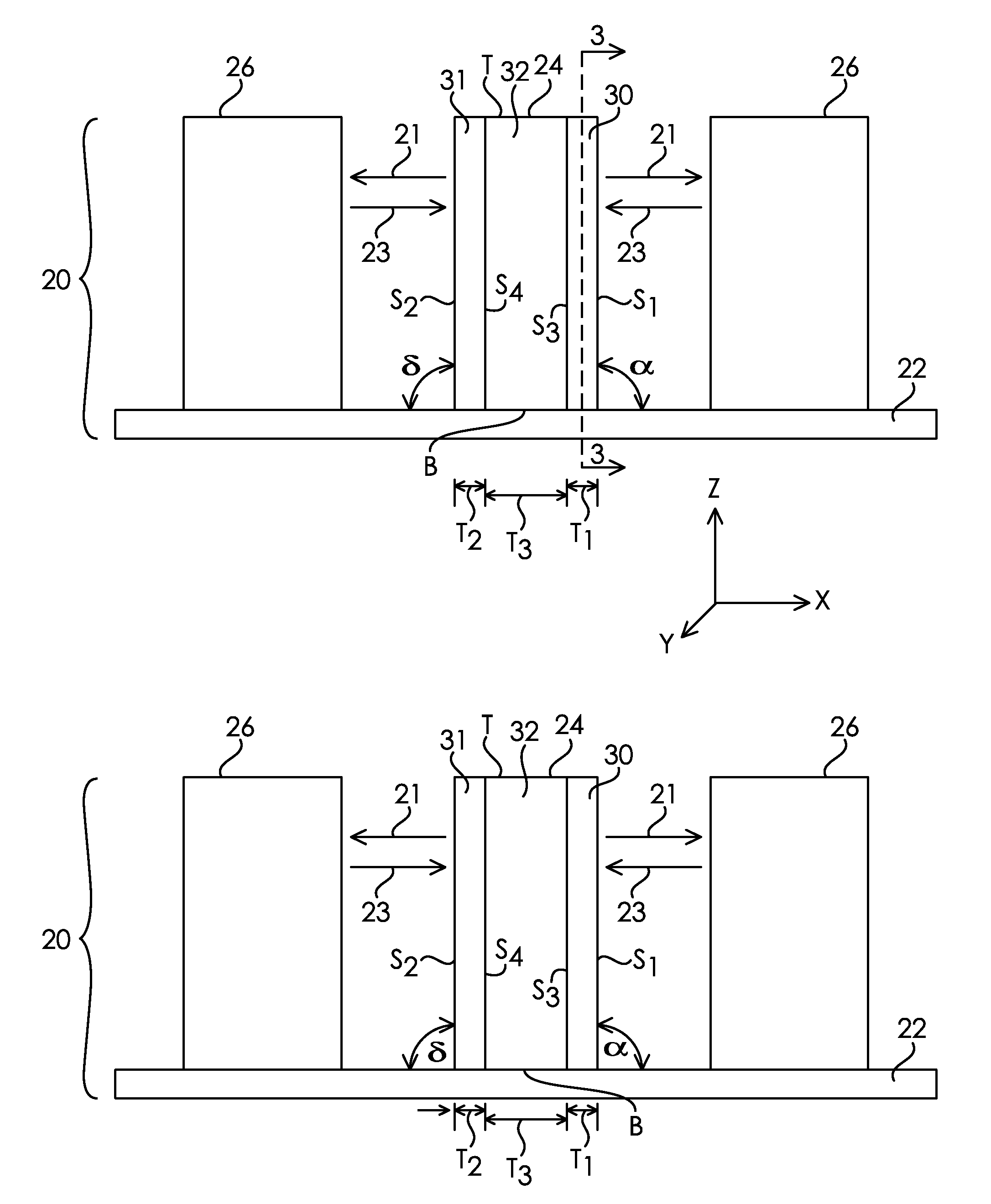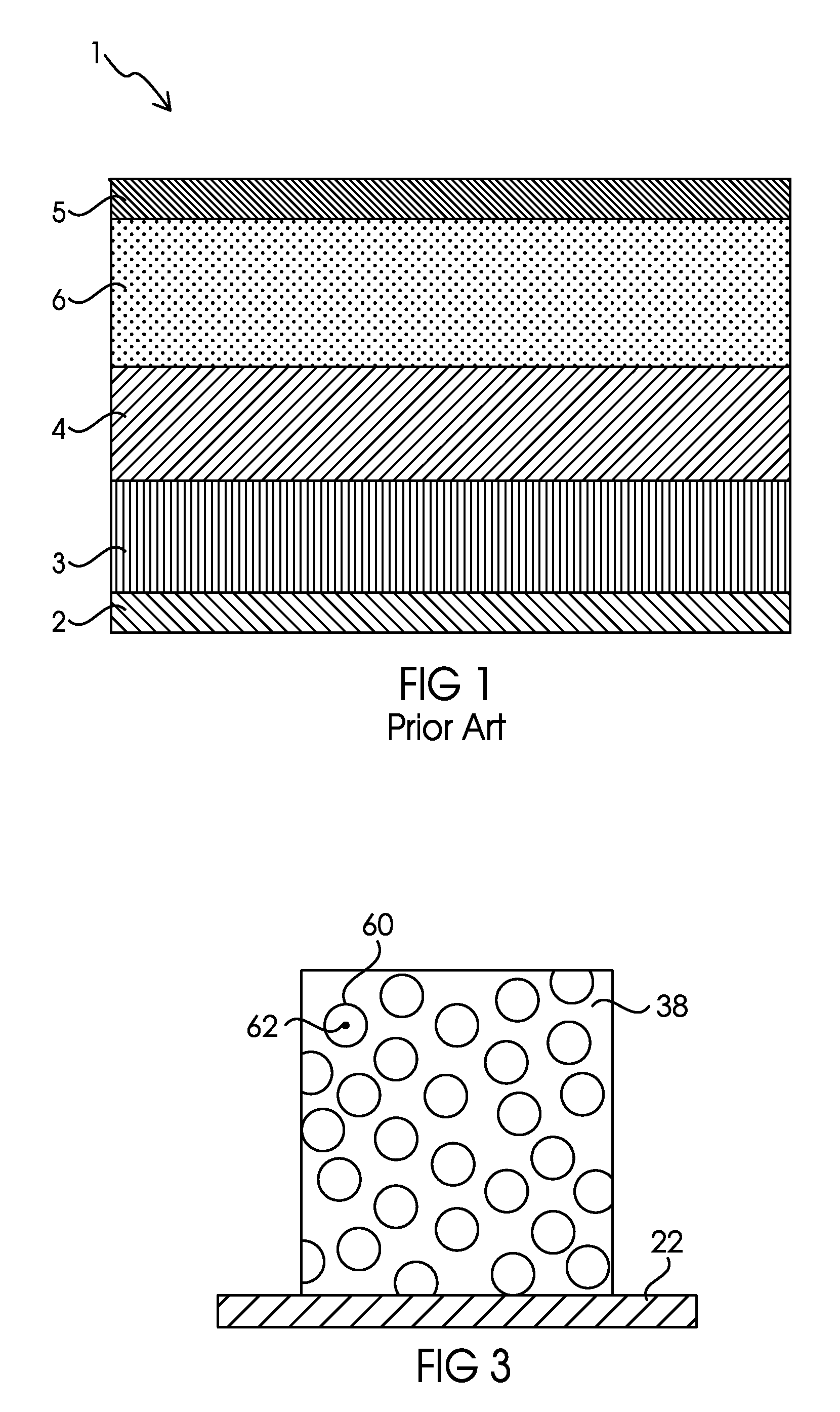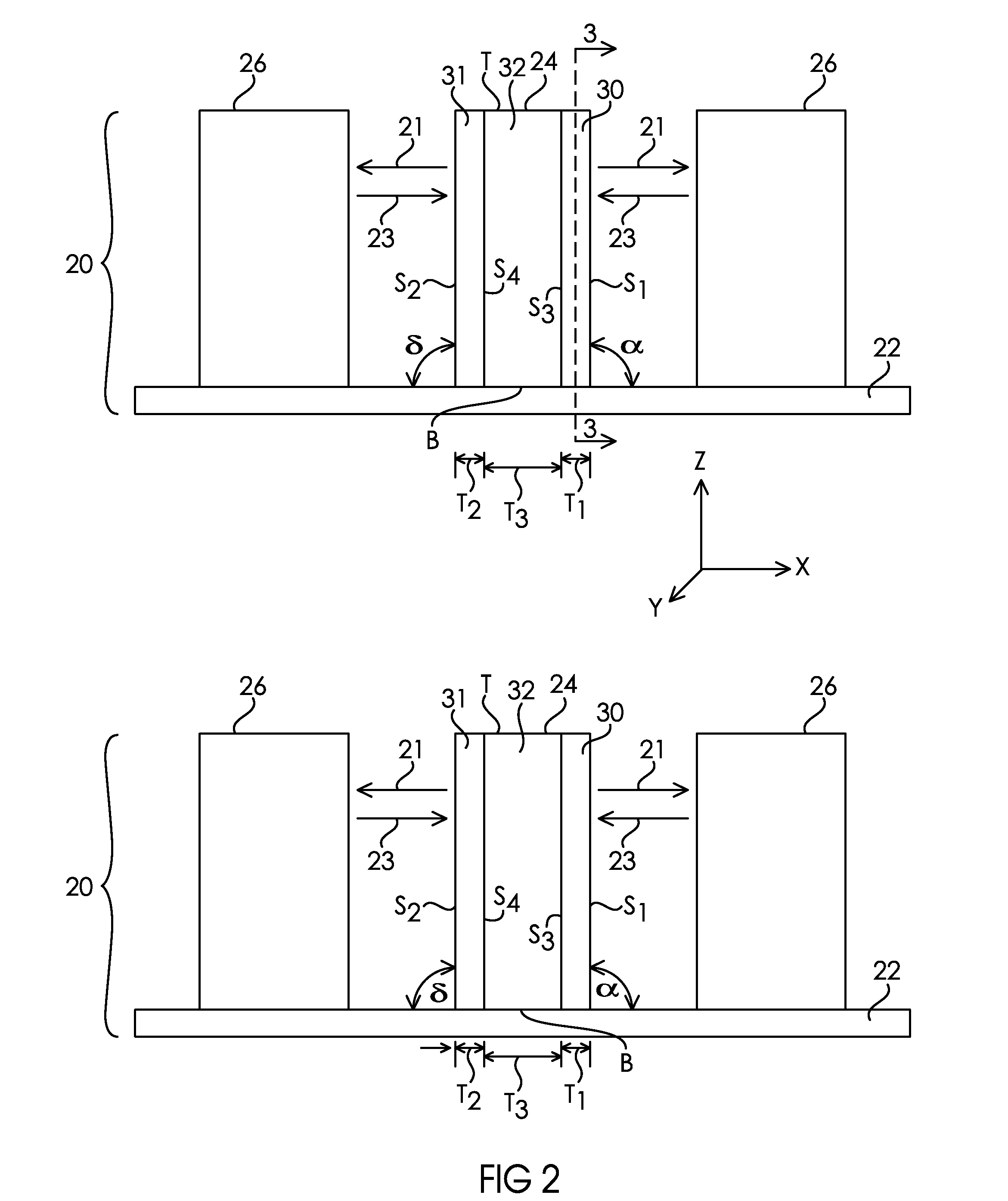Microstructured electrode structures
a microstructured electrode and structure technology, applied in the field of structures, can solve the problems of crack formation, pulverisation of anodes, disintegration and exfoliation of existing electronic current collectors, etc., and achieve the effects of reducing transport distances, minimizing or reducing transport distances, and reducing energy storag
- Summary
- Abstract
- Description
- Claims
- Application Information
AI Technical Summary
Benefits of technology
Problems solved by technology
Method used
Image
Examples
example 1
[0102]A silicon on insulator (SOI) wafer with a layer thickness of 100 μm / 1 μm / 675 μm (device layer / insulating layer / backing layer) was used as the sample. A hard mask layer of 2000 Å silicon dioxide was sputter deposited on top of the device silicon layer. This wafer was then spin coated with 5 μm of resist and patterned with a mask to obtain a honeycomb shaped structure with the honeycomb wall thickness of 100 μm and the gap thickness of 200 μm. The photoresist was then used as a photomask to remove the silicon dioxide by ion milling.
[0103]The combination of silicon dioxide and photoresist was used as a mask for silicon removal using Deep Reactive Ion Etching (DRIE) in a fluoride plasma. The DRIE was performed until the silicon constituting the device layer in the honeycomb gaps was completely removed, stopping on the oxide layer. The overetch time used was 10% of the total DRIE time in order to remove islands of silicon in the trench floor. Any top photoresist was removed by stri...
example 2
[0107]A silicon on insulator (SOI) wafer with a layer thickness of 100 μm / 1 μm / 675 μm (device layer / insulating layer / backing layer) was used as the sample. 1000 Å of Pd was sputter deposited on top of the device layer followed by a hard mask layer of 2000 Å silicon dioxide. This wafer was then spin coated with 5 μm of resist and patterned with a mask to obtain a comb shaped structure with two interdigitated combs isolated from each other as shown in FIG. 3. The two interdigitated combs also have a landing pad on each side that may be isolated and serve as the contact pad for processing and for the final battery. The photoresist was then used as a photomask to remove the silicon dioxide and palladium by ion milling.
[0108]The combination of silicon dioxide, photoresist, and Pd was used as a mask for silicon removal using Deep Reactive Ion Etching (DRIE) in a fluoride plasma. The DRIE was performed until the silicon constituting the device layer in the mask gaps was completely removed,...
example 3
[0113]A silicon on insulator (SOI) wafer with a layer thickness of 100 μm / 1 μm / 675 μm (device layer / insulating layer / backing layer) was used as the sample. 1000 Å of Pd was sputter deposited on top of the device layer followed by a hard mask layer of 2000 Å silicon dioxide. This wafer was then spin coated with 5 μm of resist and patterned with a mask to obtain a comb shaped structure with two interdigitated combs isolated from each other as shown in FIG. 3. The two interdigitated combs also have a landing pad on each side that may be isolated and serve as the contact pad for processing and for the final battery. The photoresist was then used as a photomask to remove the silicon dioxide and Palladium by Ion Milling.
[0114]The combination of silicon dioxide, photoresist, and Pd was used as a mask for silicon removal using Deep Reactive Ion Etching (DRIE) in a fluoride plasma. The DRIE was performed until the silicon constituting the device layer in the mask gaps was completely removed,...
PUM
| Property | Measurement | Unit |
|---|---|---|
| thickness | aaaaa | aaaaa |
| height | aaaaa | aaaaa |
| thickness | aaaaa | aaaaa |
Abstract
Description
Claims
Application Information
 Login to View More
Login to View More - R&D
- Intellectual Property
- Life Sciences
- Materials
- Tech Scout
- Unparalleled Data Quality
- Higher Quality Content
- 60% Fewer Hallucinations
Browse by: Latest US Patents, China's latest patents, Technical Efficacy Thesaurus, Application Domain, Technology Topic, Popular Technical Reports.
© 2025 PatSnap. All rights reserved.Legal|Privacy policy|Modern Slavery Act Transparency Statement|Sitemap|About US| Contact US: help@patsnap.com



